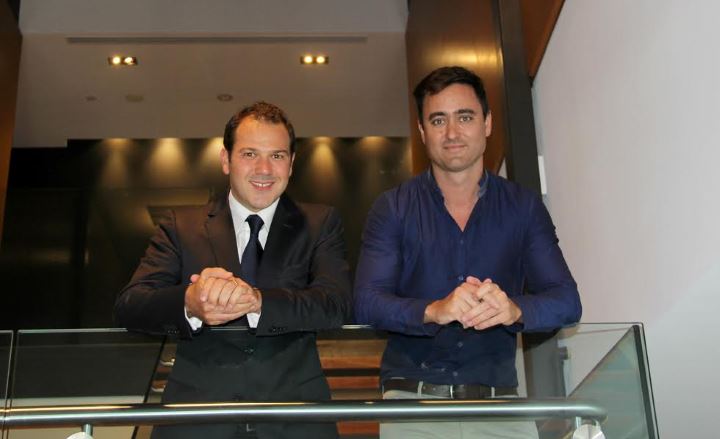
MOST people might umm and ahh a bit when it comes to looking for a new job.
But a new Australian tech company will know when you’re ready for one - even before you do.
LiveHire is an online platform that’s revolutionising the way human resources departments find employees by offering them “talent on demand”.
And the smart “talent on demand” system can not only predict when companies need to hire, it can also anticipate when employees are ready to make a move.
“We are entering an era of what’s called anticipatory design, which is that computers will know when you want things rather than exactly what you want,” says LiveHire co-founder and commercial director Michael Haywood.
Mr Haywood says LiveHire is already using the technology to match employers with workers who are ready for the next opportunity.
“With LiveHire for example, when people create their resume, we understand their average tenure and their past work experience, so we know on average when people’s feet start to get a little bit itchy and they might want to change career,” he says.
“We can also track how quickly they’re responding to communication from employers, or how long they’re sort of ignoring it and leaving it.
“And that’s a really good indicator of people’s interest in changing jobs - how responsive they are to communications from other companies.
“So what we do is we tend to just track people’s average response time and as their response times start to get quicker and quicker we know that they’re sort of getting into that area of being interested in a career change, and that’s when we’ll naturally start to put them at the top of employer search results.”
LiveHire is already being used by more than 1500 companies to find workers on demand, and about 1.3 million potential employees are signed up.
“Currently we’ve digitised around 12 per cent of the Australian working population,” says Mr Haywood.
When people sign up to LiveHire they can add their skills, resume, availability (such as casual, part-time or full-time, as well as notice period and / or when they can start), location and salary expectations.
Then HR departments can seek out people with the skills they need at short notice and ask for an interview and offer them a job.
Large enterprises like Ernst & Young can also set up and maintain Live Talent Communities full of people who would be interested in working for them in the future, making it much quicker and more efficient to hire when they need new people.
Other companies running Live Talent Communities with LiveHire include Seven West Media, Bupa and AWX.
“People join LiveHire by creating a digital LiveHire resume and they’ll join lots of different talent communities for big enterprise, and they’ll also participate in a public marketplace for small businesses to search and connect with,” Mr Haywood says.
“Their talent data is shared across all of those companies, so obviously there’s a lot of efficiency in keeping data ‘live’ for companies which they previously had to do themselves, but also to help understand that responsiveness and constantly shuffle the marketplace so it truly is ‘talent on demand’.
“We don’t want a situation where lots of people are being sent job offers but they’re not interested in work. Similarly you don’t want employers having to reach out to lots and lots of people, and get absolutely no response. That’s a really bad user experience.”
Mr Haywood says one of the other smart services LiveHire is able to offer is predicting when companies will need to hire new people, and what skills they will need, as they grow.
“I guess there’s macro and micro metrics,” says Mr Haywood.
“Firstly, we understand from a company’s seasonal hiring pattern depending on the industry. For example we know when retail companies are going to be needing a much higher volume of retail staff, particularly around the holiday and Christmas period, so we’ll naturally be serving those skills up at the top of their talent community rather than, say, administration and back-office and management skills.
“Similarly in the construction industry we understand that our clients typically will go through an engineering phase first, and then when feasibility is completed they’ll be in construction mode and then when that’s completed they’ll be in operation mode, you know, running the plant or the site.
“We can serve up at the right talent at the right point in time to the HR team so they’re not having to sift through things that they don’t want.
“On a broader scale, we know based on companies that have grown in their industry in the past, naturally how a company would grow and how their org chart tends to grow, so again we can predict when they’re going to need key skills in their business that they don’t have yet and we can start to then put those in their search results a lot higher.
“We know from the data that this typically is the direction in which a company grows, you know they sort of have management, and then they build a sales team, and then they start to build a customer success team, and then they start to build an implementation team, all of which need different kinds of workers.”
However no matter how smart the LiveHire system becomes, Mr Haywood says that deciding which particular job is right for each person is still best left to human choice.
“Ultimately a computer is capable of doing anything, but whether it gets the outcome that we need is the question,” he says.
| < Prev | Next > |
|---|




